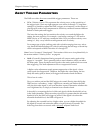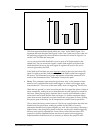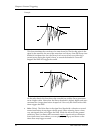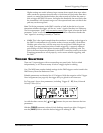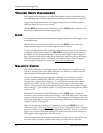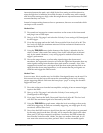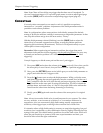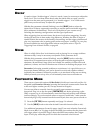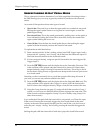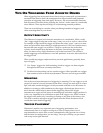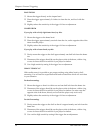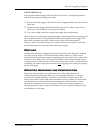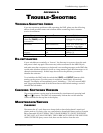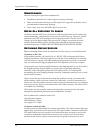
External Triggering: Chapter 6
DM5 Reference Manual 49
TIPS ON TRIGGERING FROM ACOUSTIC DRUMS
When triggering from an acoustic drum, that is using a contact pick up (transducer)
mounted to the head or shell, the same general set-up procedures and parameter
principles of triggering from pads apply. However, due to extreme head vibrations
and resonance of acoustic drums, keeping the “factors” under control is considerably
more difficult. These tips should help you in eliminating potential problems.
There are several things to consider when purchasing transducers (triggers), and
when mounting them to your drums.
OUTPUT SENSITIVITY
The difference in output levels between transducers is considerable. While a really
“hot” trigger might work great on the snare, it may not work as well on a bass drum.
For example, a high sensitivity trigger will detect the softer “grace” notes on a snare
drum and provide the best tracking in a tight pressed roll. On a bass drum however,
because that same trigger is so sensitive, it may be overdriven due to the sheer
velocity of each impact from the beater on the head. Overdriving the trigger can
allow it to detect every slight vibration as you hit the bass drum. This results in
double triggering and contributes to cross talk problems. It can also reduce the life of
the trigger itself.
When considering trigger output sensitivity towards applications, generally these
tips will apply.
➀ Use “hotter” triggers for shell mounting. Sensitive triggers can detect signals
through the shell more accurately than others.
➁ For direct head mounting use less sensitive triggers. When possible use a trigger
that contains a built-in sensitivity adjustment. There are several types available.
MOUNTING
One of the most important aspects of triggering is mounting. For any trigger to work
properly it must be correctly mounted to the drum. Always use some type of a foam
tape, and make certain the trigger is firmly mounted with little or no movement. In
addition to forming a solid foundation for the trigger, the foam tape also acts as a
shock absorber which helps to deter double triggering. Most of the trigger
manufacturers supply several pieces of mounting tape with their trigger products. It
is also very important to be certain that no part of the trigger wire, which connects
the trigger to the audio jack, is touching or resting on any part of the drum or rim.
This wire is sensitive enough to trigger signals from the drum vibrations which
would then cause double triggering.
TRIGGER PLACEMENT
Placement is another very important part of triggering performance, but
unfortunately there is no right or wrong set of rules. It simply takes a lot of
experimentation to arrive at the correct combination for the type and size of drum,
and the drum kit configuration you are using. These tips will help you get started
with a step in the right direction.




